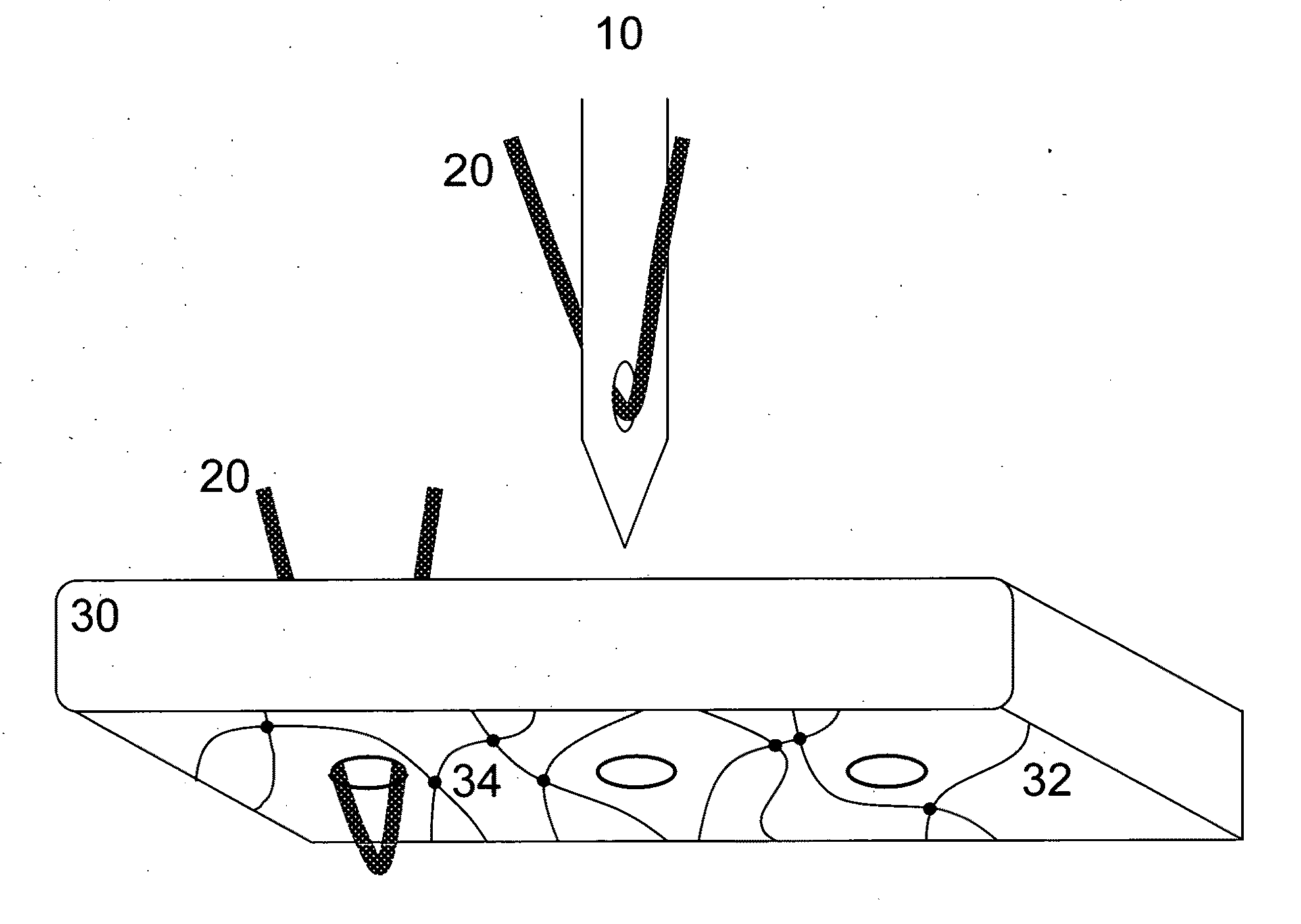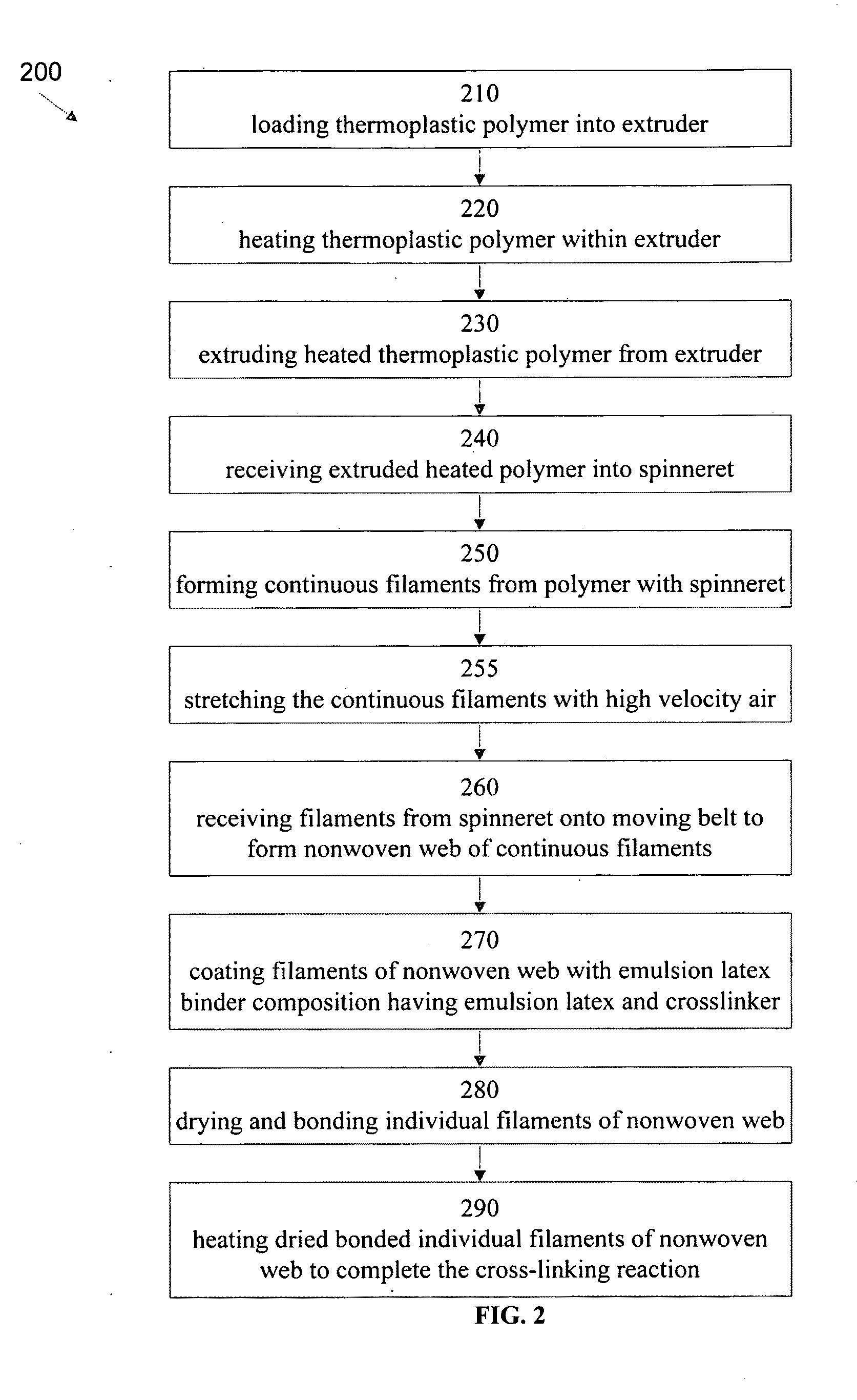Carpet tile primary backing systems and methods
a technology of primary backing and carpet tiles, which is applied in the field of nonwoven fabric manufacturing, can solve the problems of tufts being susceptible to dislocation from the primary backing, and achieve the effects of enhancing tufting and securing characteristics, and enhancing strength and elasticity
- Summary
- Abstract
- Description
- Claims
- Application Information
AI Technical Summary
Benefits of technology
Problems solved by technology
Method used
Image
Examples
Embodiment Construction
Embodiments of the present invention encompass spunbonds and methods of their preparation that involve crosslinked binder systems. These techniques provide enhanced Quality Knee and Defect Peak values, or Tuft Grip parameters, while maintaining low Penetration Resistance and high dimensional stability.
Polyester or polyolefin spunbond can be manufactured by feeding a thermoplastic polymer into an extruder, feeding the extruded molten polymer through a spinneret to form continuous filaments, and laying down the extruded filaments on a moving conveyor belt to form a nonwoven web of randomly arranged continuous filaments. In the lay-down process, desired orientation can be imparted to the filaments by the rotation of the spinneret, introduction of controlled airstreams, or varying the speed of the conveyor belt. The individual entangled filaments in the nonwoven web can be bonded with an emulsion latex binder composition which can be dried and crosslinked in a heated oven.
Embodiments of...
PUM
| Property | Measurement | Unit |
|---|---|---|
| Defect Peak Force | aaaaa | aaaaa |
| Defect Peak Force | aaaaa | aaaaa |
| Defect Peak Force | aaaaa | aaaaa |
Abstract
Description
Claims
Application Information
 Login to View More
Login to View More - R&D
- Intellectual Property
- Life Sciences
- Materials
- Tech Scout
- Unparalleled Data Quality
- Higher Quality Content
- 60% Fewer Hallucinations
Browse by: Latest US Patents, China's latest patents, Technical Efficacy Thesaurus, Application Domain, Technology Topic, Popular Technical Reports.
© 2025 PatSnap. All rights reserved.Legal|Privacy policy|Modern Slavery Act Transparency Statement|Sitemap|About US| Contact US: help@patsnap.com



